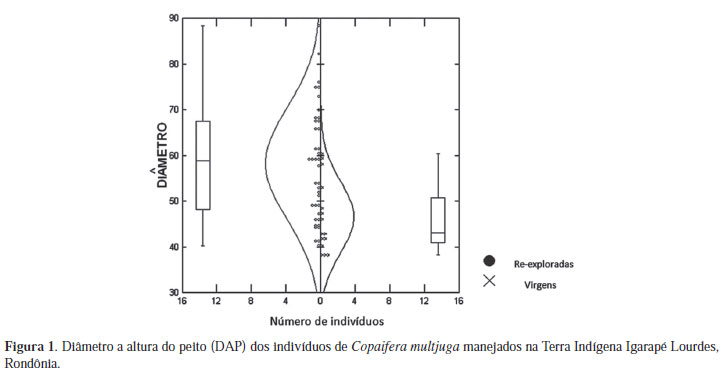The production potential of oleoresin from 100 retapped and 36 first-time tapped trees of Copaifera multijuga Hayne was evaluated inthe Indigenous Land Igarapé Lourdes (territory of Arara and Gavião ethnicities), Rondônia. The diameter at breast height (DBH) and the amount of oleoresin exuded was measured for each tree and the individuals were identified based on dendrological characteristics. The results indicate that relative frequency of yielding trees had similar pattern between retapped (39%) and those tapped for the first time (41.6%). The production ranged from 0 to 3.6 L/tree, with an overall average of 0.143 L/tree, where 0.157 L/tree was recorded for retapped and 0.104 L/tree for virgin trees. By excluding the non-yielding trees, the average yield of retapped trees is increased to 0.403 L/tree, while the virgins increased to 0.250 L/tree, but these differences were not statistically significant (t, p = 0.37). Retapped trees had higher average diameters (58 cm) and are statistically different (T, p = 0.001) from the virgins (46 cm). Positive correlation was found between production and diameter, being more significant for the virgins (0.61) than for the retapped trees (0.27). Despite the yield variability, there was a slight trend of lower oleoresin exudation from smaller DBH (30-40 cm) trees, which is one possible explanation for the lower production of virgin trees.
Amazonia; non-timber forest products; management





